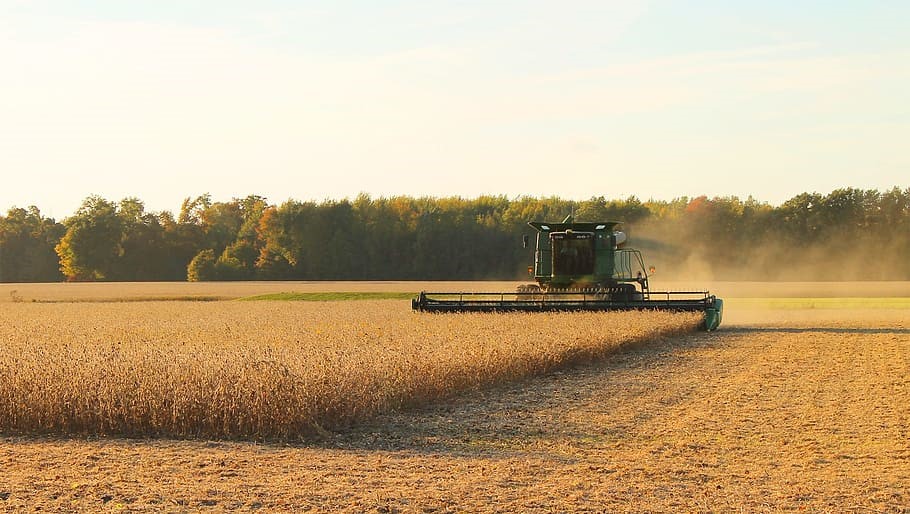As the 2020 planting season is upon us, it’s important to remember and check on the stored grain from fall 2019. A lot of the harvested grain from last fall is still being stored, awaiting more favorable market values. Both soybean and corn are at their best quality when going into a storage bin. It is critical to manage the quality from this point forward until the grain is moved to market. A lot of time is going to be spent over the next few months tending to the current and upcoming crop. However, it’s imperative to stay proactive in monitoring the stored grain.
 Quality Issues Caused Before Storage
Quality Issues Caused Before Storage
Events leading up to harvest can cause potential quality issues that require monitoring. These events include warm temperatures, moisture, heavy weed pressure (weed seeds), and damaged grains from insect, disease and harvest equipment.
Soybeans tend to absorb moisture from the air until relative humidity and the moisture content of the grains have reached equilibrium. Soybean grains harvested above 13% need to be aerated to prevent mold and limit storage deterioration. The lower the temperature in the bin, the higher the grain quality.
During the spring and summer months aerate soybeans as often as needed to keep the temperature between 40-60 degrees Fahrenheit. Grain should be monitored at least twice a month going into the summer months. Insect infestation during storage usually occurs at the central core and the surface and should be avoided if possible. Insects rarely interfere with grain that has not been damaged. Ensuring bins are clean and little debris is left is critical to preventing infestation.
 Safety Benefits of Proper Grain Storage
Safety Benefits of Proper Grain Storage
Keeping grain quality is a challenge, but when done properly is can also prevent entrapments. Less crusted and moldy grain means a person doesn’t have to put himself or herself in danger to break the grain apart. Additionally, wet grain will start to ferment and create carbon dioxide. Since carbon dioxide weighs more than air, it creates an oxygen limiting environment in the bin. The CO2 reduces your ability to breathe in the bin as the toxic gas enters your blood stream. Don’t let a grain storage accident happen to you or a family member and make sure that you are monitoring your stored grain this spring.


 and then
and then